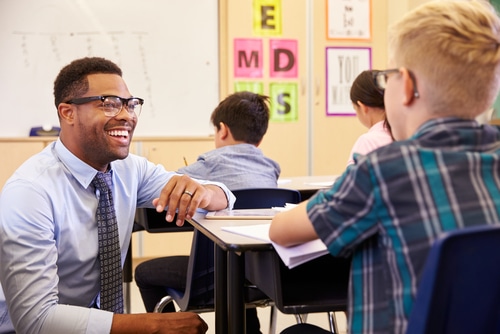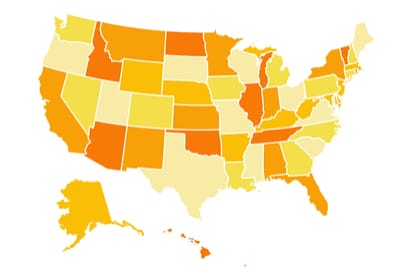
Teaching elementary school offers rewarding experiences with younger learners and smaller class sizes. But how to become an elementary school teacher?
How to Become an Elementary School Teacher, Step 1: Work with children in other ways
In theory, gaining prior experience working with children is an optional step. Realistically, however, this really is something you need to do, for a number of reasons.
First and foremost, you need to make sure you truly want to become an elementary school teacher. Teaching elementary school means working with a very wide variety of kids — you could be assigned to any grade from first through fifth, and maybe even sixth grade at some elementary schools! You need to make sure you are comfortable working with kids from a variety of ages and backgrounds. And you need to get a feel for what it’s like to work with groups of children, as this really is a lot different from managing a classroom full of adolescents, teens, or adults.
A secondary concern — but still an important one — is building a resume for teaching elementary school before you even begin. The elementary education license is a popular one. To stand out among other applicants, you should have as much experience as possible, whether that experience is volunteering with community youth groups, teaching summer camp, babysitting, being a teacher aide, or working at a daycare center. So if you’re thinking about becoming an elementary school teacher in the future, start looking for work in child care and child education right now!
How to Become an Elementary School Teacher, Step 2: Complete a degree or post-bac in elementary education
There’s no way around it — you need a university-backed credential in elementary education in order to teach in an elementary school classroom. (With the exception of a handful of annual openings in the Teach for America program, you can’t become an elementary school teacher through alternative certification.)
This means looking for an undergrad degree program in elementary or K-12 education, a Master’s program, or post-baccalaureate certificate if you already have a bachelor’s degree in another field. Post-baccalaureate certificates are non-degree programs that give you just enough coursework to qualify for a state teaching license. Post-bac programs are rare. But a post-bac program just might be your fastest path to elementary education licensure, if you can find one.
University options for elementary school teachers are plentiful and varied. Pretty much any four-year university will offer an elementary education major, and most universities that offer grad degrees include Master’s degree offerings that lead to an elementary education teaching certificate. There are also a lot of options for elementary or K-12 teaching certificate online.
How to become an Elementary School Teacher, Step 3: Apply to your state for an elementary education teaching certificate
After you complete your degree coursework (student teaching included), you’ll need to submit an elementary education teaching portfolio to your state’s teacher licensing board. You’ll also need to submit your certification testing scores. Certification exam requirements vary from state to state. You will either need to pass the Praxis or an in-state test that’s similar to the Praxis.
How to become an Elementary School Teacher, Step 4: Start teaching!
As I mentioned above, the job market for elementary education teachers is very competitive. If you want to start working as a homeroom teacher right away, you may need to be flexible on where you’ll teach, and be open to relocating. But if you have your heart set on a specific school district that isn’t hiring, there is hope. Many certified elementary education teachers start out as district substitute teachers, and eventually get promoted into positions as elementary school homeroom teachers.





Leave a Reply